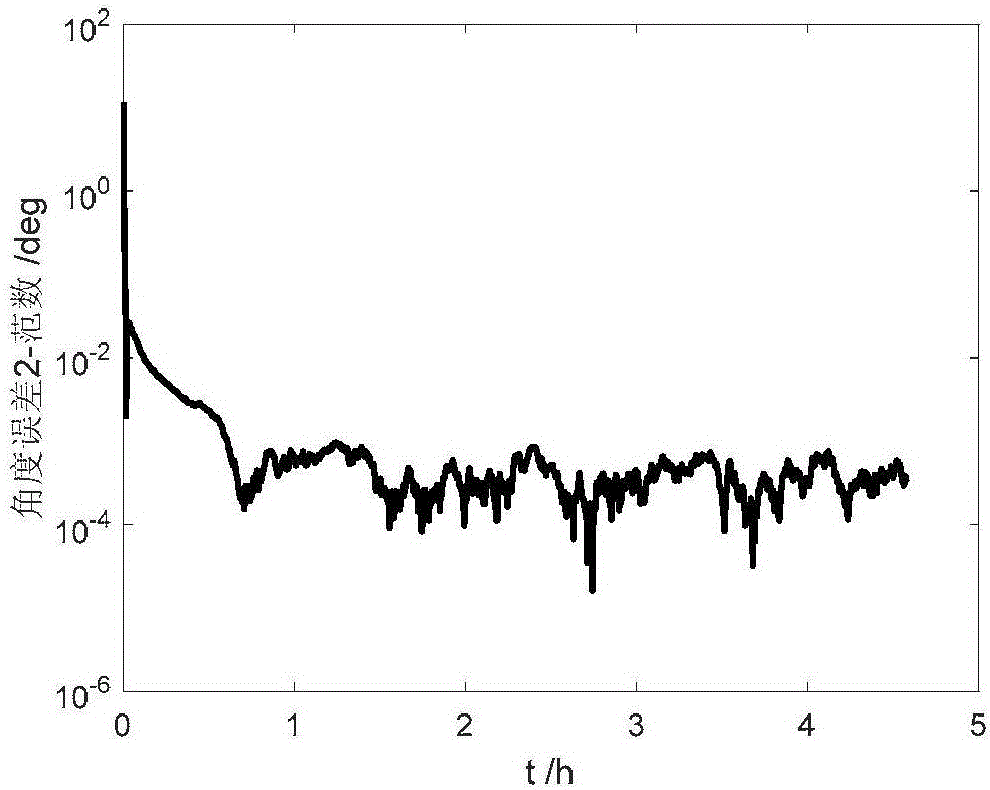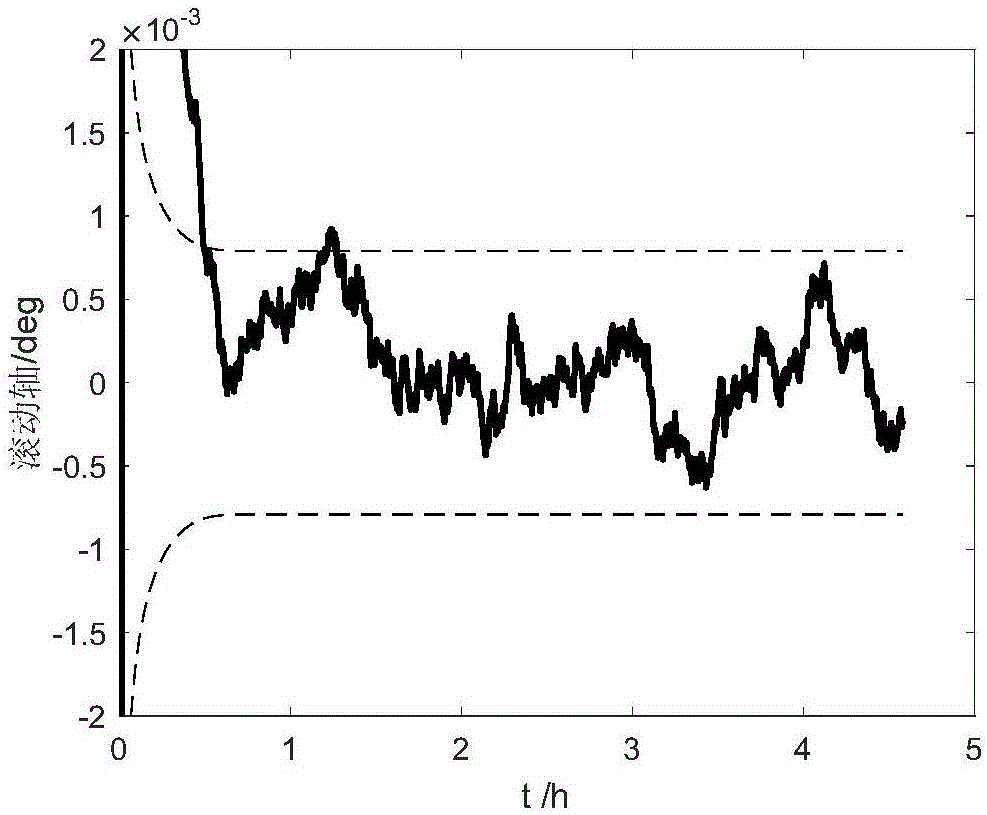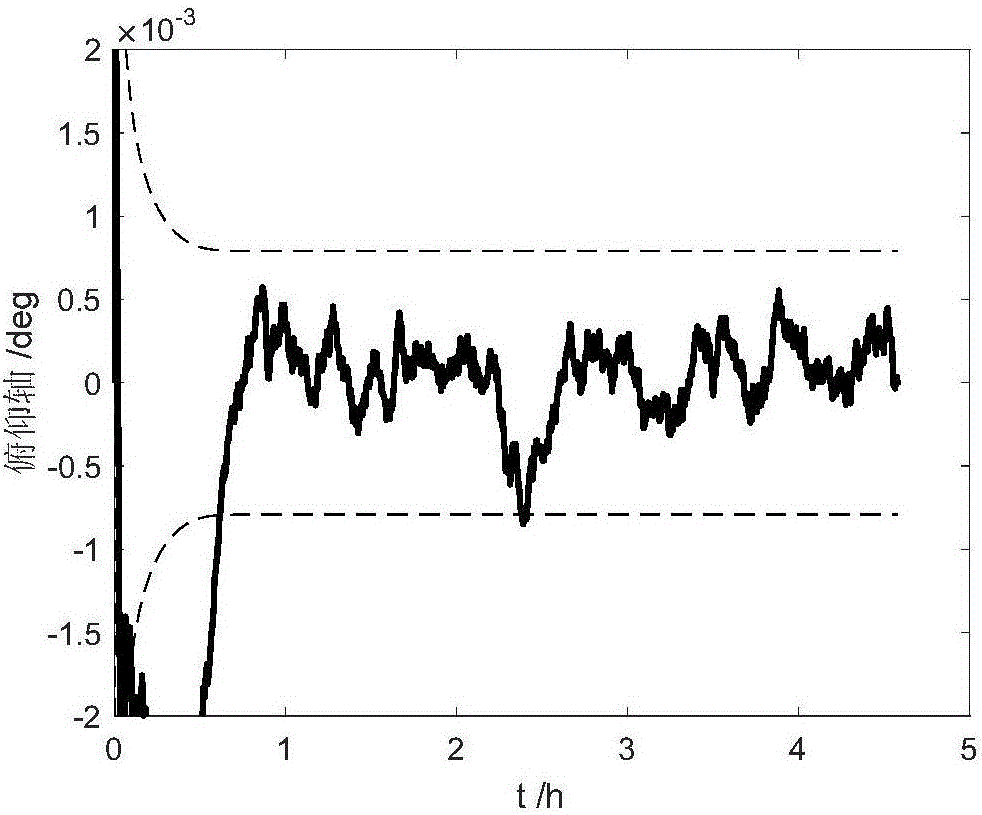Method for estimating aircraft attitudes based on capacity quaternion estimation
An attitude estimation and spacecraft technology, which is applied to integrated navigators, navigation calculation tools, etc., can solve the problem of low accuracy of spacecraft attitude estimation, avoid quaternion norm constraints, reduce gyro drift estimation errors, and achieve estimation accuracy. high effect
- Summary
- Abstract
- Description
- Claims
- Application Information
AI Technical Summary
Problems solved by technology
Method used
Image
Examples
specific Embodiment approach 1
[0030] Specific implementation mode one: the specific process of the spacecraft attitude estimation method based on volumetric quaternion estimation is:
[0031] Step 1: Establish spacecraft attitude kinematics model and observation model;
[0032] Step 2: Use the Gaussian filter algorithm to remove the noise in the spacecraft attitude kinematics model and observation model established in Step 1;
[0033] Step 3: Estimate the attitude of the spacecraft using a volumetric quaternion attitude estimator.
specific Embodiment approach 2
[0034] Specific embodiment two: the difference between this embodiment and specific embodiment one is: the specific process of establishing the spacecraft attitude kinematics model and observation model in the step one is:
[0035] Consider a nonlinear discrete system with multiplicative noise:
[0036] x k+1 =(I n×n +ζ k Φ k )f(x k )+w k (1)
[0037] the y k =h(x k )+v k (2)
[0038] where x k ∈ R n is the state quantity of the system at time k, y k ∈ R m is the observed value of the system at time k; f(x k ) and h(x k ) is a nonlinear equation; Φ k is the known constant coefficient matrix, ζ k ∈R is the multiplicative noise, w k ∈ R n and v k ∈ R m is the system additive noise and the measurement additive noise; R is a real number, and R n is an n-dimensional real number set, R m is the set of m-dimensional real numbers;
[0039] Assumption 1: w k and v k are all white noise, and satisfy
[0040]
[0041] where δ t,k is a Kronecker function, ...
specific Embodiment approach 3
[0076] Specific embodiment three: the difference between this embodiment and specific embodiment one or two is: the specific process of using the Gaussian filter algorithm in the step two to remove the noise in the spacecraft attitude kinematics model and the observation model established in the step one is:
[0077] A modified Gaussian filtering framework is used to deal with noise-related situations, and the filtering algorithm designed in this paper uses a one-step update of the posterior probability density. The improved Gaussian filtering framework is similar to the classical Gaussian filtering algorithm, and it is also divided into two steps: one-step prediction and measurement update, which are described as follows by Theorem 1 and Theorem 2 respectively.
[0078]Lemma 1: Suppose the joint Gaussian distribution of vectors X and Y is as follows
[0079]
[0080] Then the conditional probability of X in the case of Y=y satisfies the following Gaussian distribution
[...
PUM
 Login to View More
Login to View More Abstract
Description
Claims
Application Information
 Login to View More
Login to View More - R&D
- Intellectual Property
- Life Sciences
- Materials
- Tech Scout
- Unparalleled Data Quality
- Higher Quality Content
- 60% Fewer Hallucinations
Browse by: Latest US Patents, China's latest patents, Technical Efficacy Thesaurus, Application Domain, Technology Topic, Popular Technical Reports.
© 2025 PatSnap. All rights reserved.Legal|Privacy policy|Modern Slavery Act Transparency Statement|Sitemap|About US| Contact US: help@patsnap.com



